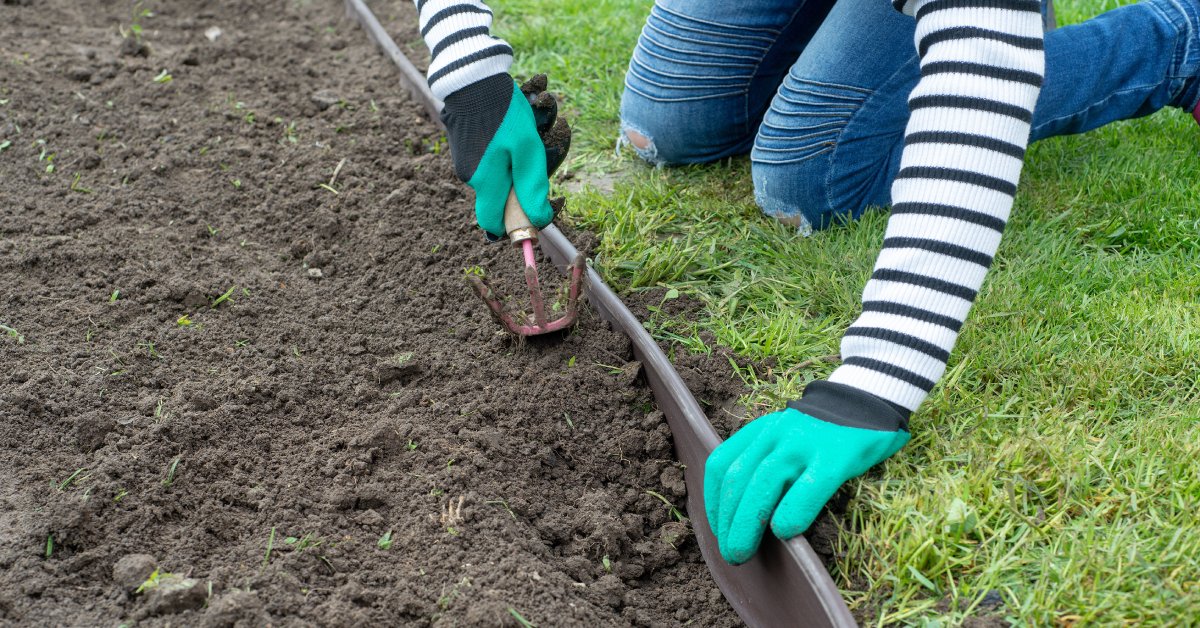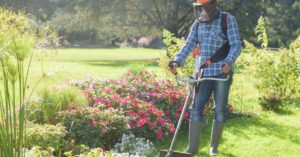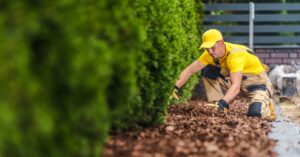Early preparation gives every garden its best shot at thriving in spring. Soil conditions directly affect water absorption, nutrient availability, and root development.
Without taking the time to address winter compaction or nutrient loss, homeowners risk weak growth or disease. Proper planning helps your soil become the foundation for a lush, vibrant landscape.
Test Your Soil Composition First
Conducting a soil test helps homeowners understand key properties like pH, organic matter content, and texture. Lab results reveal whether your lawn needs amendments like lime, compost, or gypsum. Many county extension services offer affordable testing and detailed results tailored to local conditions.
What you should know to get your soil ready for spring begins with identifying your soil’s baseline condition before applying any treatments. Soil that’s too acidic might need lime, while highly compacted clay often benefits from expanded organic material. Each yard differs, and test data lets you respond with the right adjustments.
Professional testing also avoids wasting time or money on treatments your lawn doesn’t need. Applying general-purpose fertilizer without checking nutrient levels may cause imbalances that hurt your plants over time. Starting with a test creates targeted improvements and long-term savings.
Break Up Soil Compaction
Winter snow and ice leave soil packed down and oxygen-starved by early spring. Compaction limits root growth and reduces drainage, especially in high-traffic areas or heavy clay regions. Aerating helps loosen soil layers so nutrients and moisture reach plant roots more effectively.
Use manual core aerators for small yards or rent mechanical ones for bigger properties. The best aeration removes small plugs of earth that give roots room to breathe. Follow up with organic compost or sand depending on your yard’s specific needs.
What you should know to get your soil ready for spring includes understanding how compaction creates long-term drainage issues. Aerating those areas improves performance across your entire lawn. Healthy, breathable soil supports strong growth through every season.
Apply Targeted Soil Amendments

Once you’ve addressed soil texture and pH, build structure and fertility with targeted amendments. Choose organic compost for general improvement or opt for more specific materials like mushroom compost or worm castings. Don’t apply peat moss or wood ash without understanding your existing pH.
Some soils benefit from gypsum to reduce sodium content or sand to loosen heavy clay. Mix amendments thoroughly into the top few inches of soil. Watering lightly afterward helps nutrients settle and absorb properly.
Proper amendments reduce erosion, improve plant stability, and support more diverse microbiomes. Roots grow deeper, which helps lawns withstand drought or heavy rains. Healthy soil resists weed invasion and fosters consistent, beautiful turf.
You can also incorporate biochar into depleted soils to retain moisture and stimulate microbial life. Avoid applying amendments too early in the season, when cold soil temperatures limit nutrient availability. Aim for late March or early April applications when soil begins warming but still holds spring moisture.
Monitor Moisture and Drainage Patterns
Spring melt and rain expose underlying drainage problems in many yards. Pooling water indicates compacted or clay-heavy areas, while fast drainage may signal sandy or shallow zones. Addressing water issues early prevents root rot and topsoil loss later.
Create swales, berms, or gravel trenches to redirect excess runoff. Use moisture meters to track whether your soil retains water between rains. Adjust watering schedules or irrigation settings as needed based on new patterns.
Drainage fixes often require layering organic matter into soil or regrading specific trouble spots. Try to identify what changed since last year—like tree removal, foot traffic, or erosion—and work from there. Sustainable drainage helps lawns remain vibrant long after spring ends.
Remove Debris and Winter Buildup
Leaves, branches, and compacted mulch block air and water from reaching soil. Left unchecked, winter debris promotes mold and pest infestation. Early cleanup sets the stage for healthy microbial activity and deeper root development.
Clear debris by hand or with a leaf blower, depending on volume and space. Rake mulch lightly to break apart mats and let air in. Avoid leaving plant material to decompose directly on top of your lawn.
Well-timed cleanup prevents fungal growth and gives your grass a clean path toward recovery. Debris removal also reveals bare spots, erosion patches, or damage you may need to repair. Quick action now saves major effort later in the season.
Re-Edge Beds and Borders

Edging defines garden beds, separates turf from hardscapes, and gives your lawn a professional finish. It also prevents creeping grass from taking over planting zones. Spring makes a great time to re-establish clean, intentional lines.
Use manual edgers or spades to carve crisp edges around beds and walkways. For long-term results, consider permanent edging materials like steel, stone, or composite products. Re-mulch after edging for best results.
At Valley Landscaping, we help homeowners bring all the pieces together by offering residential landscaping services tailored to your soil, region, and vision. Our one-stop approach makes lawn care, hardscaping, and seasonal prep easy and seamless. We value the trust of every client and handle every project with care.
Choose the Right Mulch and Apply It Correctly
Not all mulches support spring growth equally. Wood chips, shredded bark, straw, and pine needles each affect moisture retention and soil temperature differently. Choose based on your plant types and sun exposure.
Apply mulch only after soil has warmed enough to promote active growth. Spread evenly and avoid piling mulch around stems or tree trunks. Stick to two or three inches to suppress weeds without smothering roots.
Mulch locks in moisture, buffers soil temperatures, and adds organic content over time. Applied too early, it traps cold and slows plant recovery. Use mulch strategically to extend the benefits of all your early spring prep.
Refresh Your Lawn With Overseeding or Fertilizer
Early spring gives you a head start on grass recovery. Cold-weather stress, salt exposure, and foot traffic often leave lawns thin or patchy. Use overseeding to boost density or fertilizer to jumpstart healthy growth.
Choose grass seed that matches your existing lawn type. Spread evenly with a broadcast spreader and water regularly until seeds establish. Select slow-release, low-nitrogen fertilizer to promote steady development without burning roots.
New seed strengthens the root network while feeding balances any nutrient loss from winter. Avoid overdoing fertilizer—less often works better if you target spring recovery. Don’t wait until summer heat makes recovery harder.
Healthy spring soil sets the stage for a stronger, more resilient lawn year-round. At Valley Landscaping, we help homeowners and businesses tackle every step, from testing and prep to complete residential landscaping services. Contact us today to schedule seasonal support tailored to your property.



